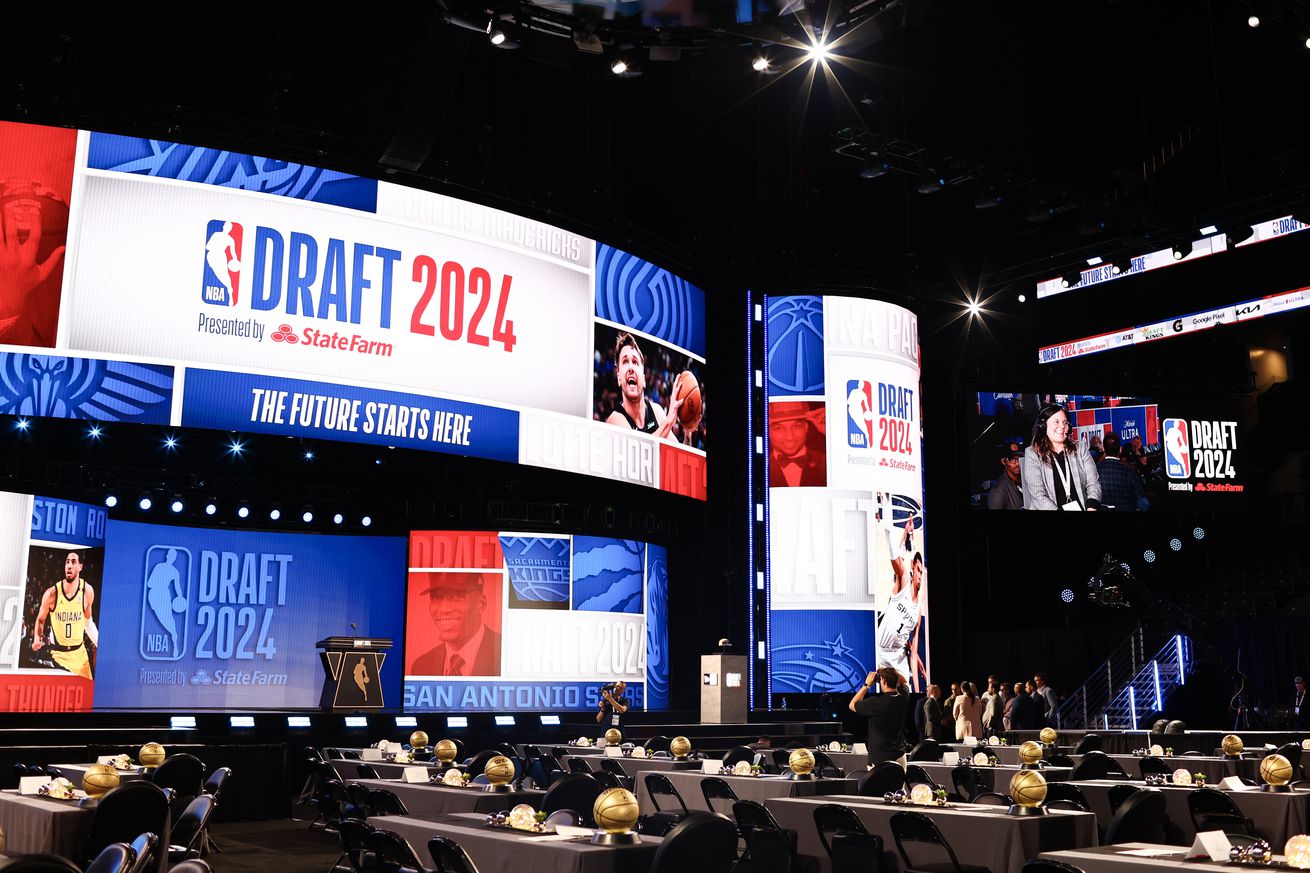
The Nets have the potential with all their picks and all that cap space to dominate at least the early part of the off-season … and their draft dominance goes deeper.
In a normal draft, one good measure of potential success is how many picks a team has in the top 40. For the Brooklyn Nets, with Nos. 6 (pre May 12 lottery), 19, 26, 27 and 36, dominate that measure. In its Draft Power Rankings for 2025, Tankathon puts the Nets at No. 1 ahead of even the teams with the best chance at Cooper Flagg: the Utah Jazz, Washington Wizards and Charlotte Hornets. Of course, that ranking is likely to change in nine days but again it’s a measure (and nine teams have no first rounders at all; two with no picks at all.)
A lot has been written and said about the Nets hoard (perhaps not as many as have been spilled on whether the Nets should have “tanked” better), but now, Bobby Marks, ESPN NBA insider and former Nets assistant GM and capologist, and Jeremy Woo, NBA draft analyst, take an even longer look, at picks beyond 2025, In their ESPN+ rankings, Sean Marks & co. are No. 2, according to the writers while at the same time, suggesting a strategy for June 25-26 at Barclays Center.
Marks and Woo rank Brooklyn just behind Oklahoma City and ahead of the Jazz and Rockets, making the top four two contenders and two rebuilding teams. It’s not just the number of picks going forward for Brooklyn. I’s that the Nets have all seven of their own first round picks from 2026 through 2032 … at least at this point.
Woo in assessing the Nets 2025 prospects likes what the Nets have put together for 2025 as well and like virtually every other pundit thinks that the Nets are unlikely to use all five picks. As Brian Lewis of the Post has noted, the Nets development staff would have to work with five rookies as well as two players, Noah Clowney and Isaiah Whitehead, who are at 20 younger than a third of the projected draft class in 2025.
The rebuilding Nets head into predraft season holding a league-high five selections in the top 40. They also have the most salary cap space, creating an opportunity to remake their roster. Logically, it’s hard to see them rostering five rookies, and they can also open up additional cap room by consolidating some of their first-round selections. Roster-wise, Brooklyn could use help on the perimeter but should focus on adding talent regardless of need considering the fluidity of its situation and lack of obvious long-term building block on the roster. Some lottery luck could go a long way.
The point about salary cap space is an often overlooked aspect not just for next season but for the end of the picks’ rookie deals. If they wind up with a top four pick and keep the remaining three first round picks between Nos. 19 and 26, the cost in salary could reach $20 million next year. Flagg alone would cost more nearly $14 million (We’ll take it!) The Nets of late have been signing second rounders to two-way deals which don’t count against the cap. It’s not that Joe Tsai can’t afford it, but with the new CBA, owners and GMs have to watch and worry about luxury taxes, aprons and cap holds.
Beyond consolidating picks, as Woo mentioned, they can also use them in a trade or trades, perhaps as a way to pick up firsts in the 2026 draft which like 2025 is filled with big stars like A.J. Dybantsa, Darryn Peterson, Cam Boozer and Nate Ament. Its depth compared to 2025 remains uncertain. Brooklyn currently has three picks in the 2026 draft, their own first and two seconds.